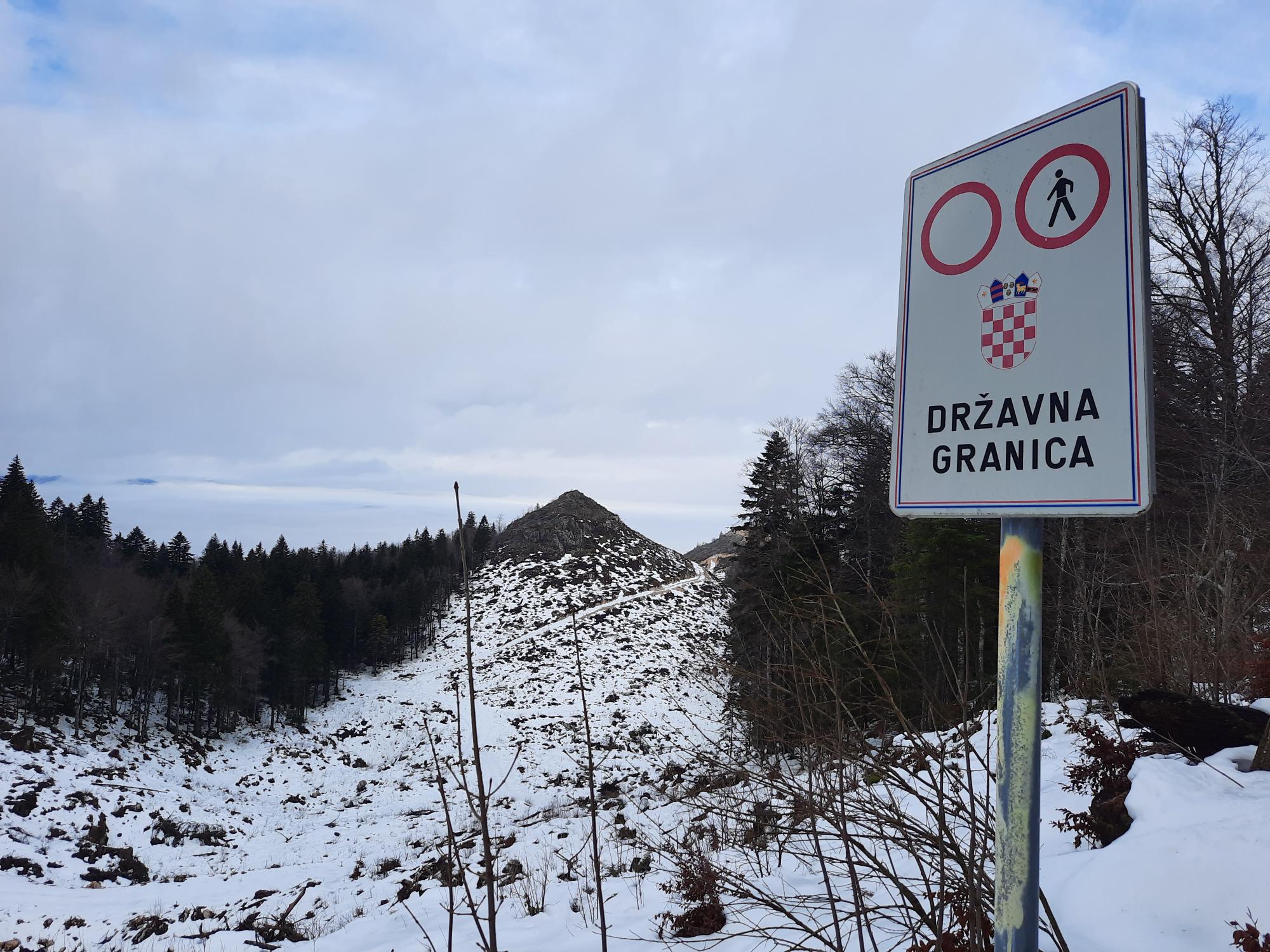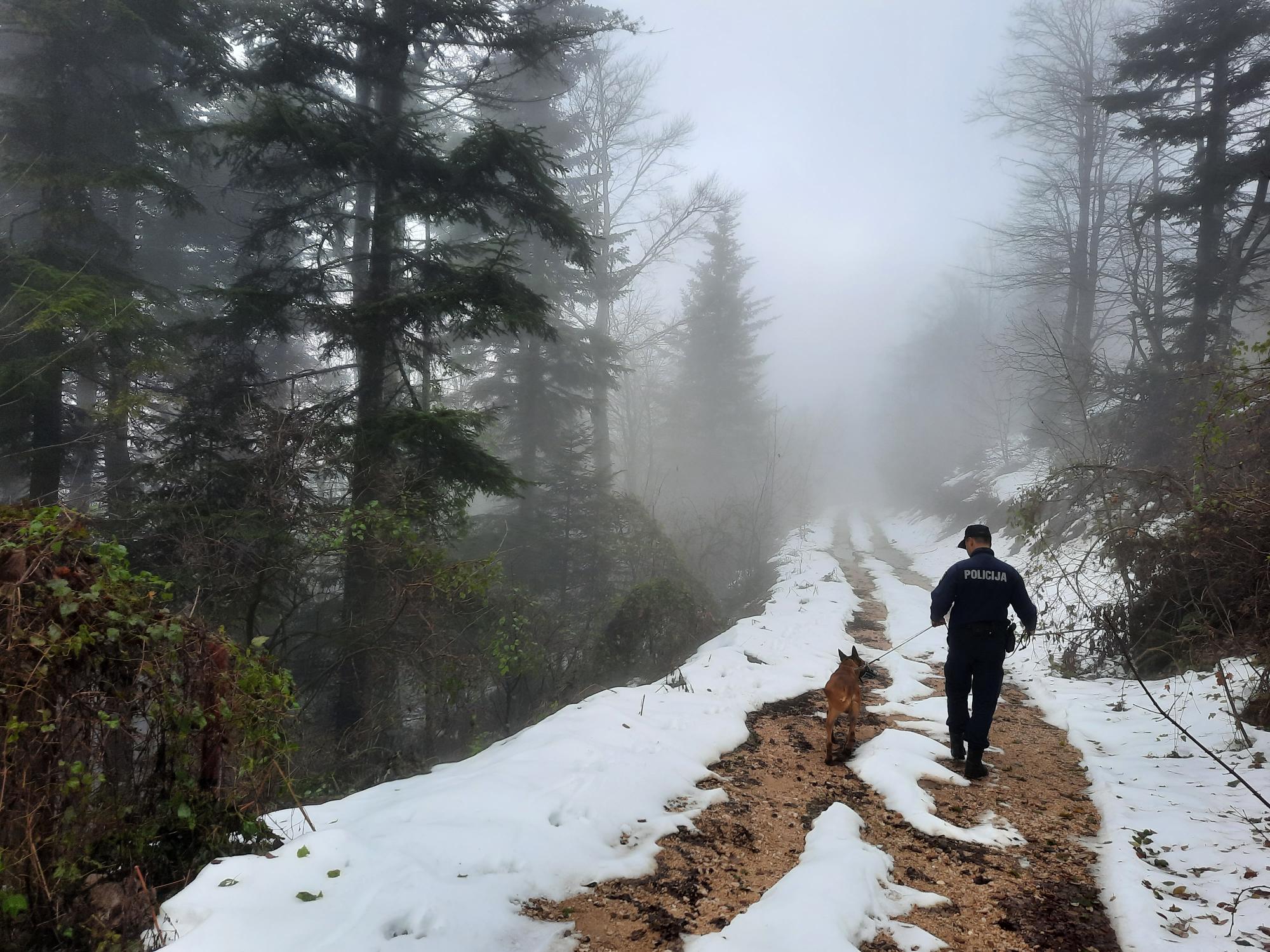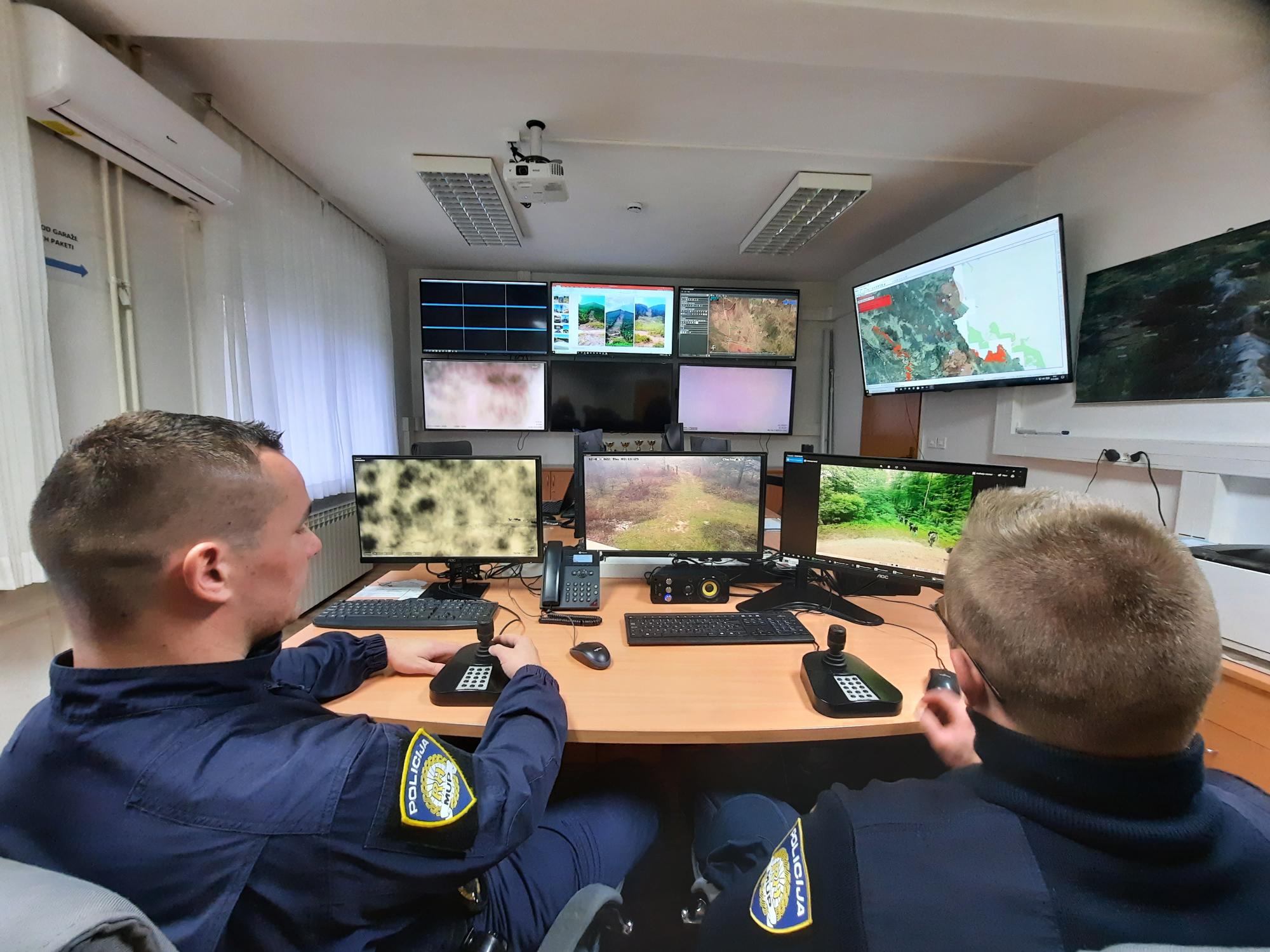Croatia joins Schengen
Croatia will enter the Schengen area from January 1st. As the president of the European Commission and the Croatian Prime Minister focus on celebrations, humanitarian organisations fear an increase in violence and pushbacks against migrants

La-Croazia-in-Schengen
State border - photo G. Vale
Croatia will officially join the Schengen area (as well as the euro area) on January 1st, 2023. On that day, President of the European Commission Ursula von der Leyen will be in Zagreb to celebrate, together with Croatian Prime Minister Andrej Plenkovic, a historic day for the youngest member state of the European Union, which will thus become a full member of the most exclusive among the European clubs – that of the 15 countries that have joined the EU, NATO, Schengen, and the Euro.
In the past few weeks, Plenkovic has repeated several times how important this milestone is for his government and how much "hard work" it took to get there. The Croatian humanitarian organisations that deal with immigration have instead received the news of Schengen with disapproval. Zagreb has received "an award" for "six years of human rights violations", writes the Peace Studies Center (CMS ), referring to the behaviour of the Croatian police on the external borders of the country.
Croatia’s entry into Schengen will make the southern and eastern border of the young republic the new limes of the free movement area. In the mountains of Lika, the Croatian police is preparing to zealously monitor the border, installing cameras and clearing long tracts of forest, while humanitarian organisations fear a new upsurge in violence against migrants. From a historical point of view, it almost seems that the Military Frontier that separated the Ottoman and Habsburg empires has come back to life.
Extensive deforestation
The jeep goes up the sides of Pljesevica bouncing between the potholes. The mountain that marks the border between Croatia and Bosnia and Herzegovina between Korenica and Bihac is shrouded in fog. "This is the stretch of the Croatian external border that is most difficult to control and the one that has experienced the greatest migratory pressure in recent years", explains Mladen Matovinovic, head of the Croatian border police in the county of Lika-Senj. He is responsible for about 100 km of the more than 1,300 that Croatia shares with Serbia, Bosnia Herzegovina, and Montenegro. If to the east the border corresponds to the Danube, the Sava, and the Una rivers, here there are only forests as far as the eye can see.
To control this territory and prevent its crossing, Zagreb has invested a lot. In the Korenica police station, where 300 officers work, Mladen Matovinovic shows us the control room, where the information arrives, captured by dozens of thermal cameras hidden in the trees and by four large cameras installed on telephone towers and capable of filming up to 20km away. Often the modern equipment available to the Croatian police has been financed by the European Union. On the other hand, a far from modern practice has been used to make it even more effective in the field – large-scale deforestation.
"We had a strip of forest cut 15 km long and 100 metres wide, and the plan calls for another 25 km to be cut down", says Mladen Matovinovic. The intervention becomes visible as you approach the top of Pljesevica, at an altitude of 1,650 metres. Those 100 metres of missing forest allow the cameras (and therefore the agents) to immediately identify those who try to cross the border illegally. What happens in that case? "People are sent back before they enter Croatia", explains Mladen Matovinovic, who adds that "in 99% of cases the sight of a person in uniform is enough to convince people to go back".
"Systematic violation of human rights"
At the headquarters of the Zagreb Center for Peace Studies (CMS), Antonia Pindulic disagrees. "Over the past six years, several associations, institutions, even the Croatian Ombudswoman and the Anti-Torture Committee of the Council of Europe have denounced the systematic violation of human rights at Croatia’s external borders", says the CMS legal expert. Not only the sight of the uniform, therefore, but "illegal pushbacks, physical violence, theft of cell phones and money, use of electroshock, gunshots fired near the ears or legs…" and much more emerges from the testimonies of the migrants. These are episodes reported on several occasions (OBCT summarised them here in 2020), but always denied by the Croatian authorities. At the end of 2021, however, the European Court of Human Rights condemned Croatia in the case of Madina Hussiny, while Lighthouse Reports published a video clearly showing the violence by the police officers. In short, over time, the allegations have become more and more solid. And as the political deadline linked to Schengen entry approaches, Zagreb’s behaviour has gradually changed.
"In 2022, humanitarian associations based in Bosnia and Herzegovina recorded fewer illegal refoulements and a lower level of violence", continues Antonia Pindulic, while the Croatian police has increasingly begun to distribute expulsion papers, which give migrants and refugees seven days to leave the territory of Croatia. For the first time since 2015, these people can use public transport to reach Zagreb and Rijeka, before continuing on to Slovenia and then the rest of the European Union. The fear of humanitarian organisations is that the entry into Schengen will bring back violence and pushbacks.
New, old frontier
In the park of Lonjsko Polje, on the border between Croatia and Bosnia Herzegovina, some cardaci stand out in the fog a few metres from the Sava which flows slowly between the two states. "They are the typical watchtowers of the Military Frontier, used above all from the 17th century to create a cordon sanitaire against the plague", comments Alexander Buczynski, a researcher at the Croatian Institute for History. Between the beginning of the 16th century and the end of the 19th century, the Militargrenze separated the Habsburg Empire from the Ottoman one. The granicari were "the peasant-soldiers" who lived within this strip of land subjected to military administration. In the event of war with the Ottomans, all men between the ages of 16 and 60 had an obligation to fight for the Habsburgs. In return, "they enjoyed greater autonomy, religious freedom and received land to cultivate". Even the idea of razing the forest to better monitor the border is not new. "In the 1770s, General Wenzel Joseph von Colloredo proposed, after an inspection of the military border, to deforest part of Lika in order to better control the border. But his proposal was rejected", says Buczynski. One hundred and fifty years later, the idea was accepted.
There are naturally many differences between the Habsburg Military Border and the new Schengen border. Bosnia and Herzegovina has been (for a few days) an official candidate country for entry into the European Union, as well as Serbia and Montenegro (the other states bordering Croatia) and people who try to enter Croatian territory are not Ottoman troops, but people fleeing war and persecution and seeking asylum within the European Union. However, the supervision of the border has not changed, the watchtowers have been replaced by video cameras, the granicari by police officers, deforestation has stayed the same. "Border control and respect for human rights can be ensured", assures Terezija Gras, State Secretary for the Interior in Zagreb and one of the architects of the border control strategy from 2017 onwards. Gras is one of three candidates to lead Frontex, the EU’s external border control agency. Should she be appointed, at the end of December 2022, "the Croatia model" – to use Gras’s words – will be further rewarded and on the Balkan route – according to Frontex , the most used route to reach Europe (with almost 140,000 crossings in the first 11 months of 2022, against 93,000 for the central Mediterranean) – there is a risk of a new restrictive turn starting from January 1st.
Featured articles
- Take part in the survey
Croatia joins Schengen
Croatia will enter the Schengen area from January 1st. As the president of the European Commission and the Croatian Prime Minister focus on celebrations, humanitarian organisations fear an increase in violence and pushbacks against migrants

La-Croazia-in-Schengen
State border - photo G. Vale
Croatia will officially join the Schengen area (as well as the euro area) on January 1st, 2023. On that day, President of the European Commission Ursula von der Leyen will be in Zagreb to celebrate, together with Croatian Prime Minister Andrej Plenkovic, a historic day for the youngest member state of the European Union, which will thus become a full member of the most exclusive among the European clubs – that of the 15 countries that have joined the EU, NATO, Schengen, and the Euro.
In the past few weeks, Plenkovic has repeated several times how important this milestone is for his government and how much "hard work" it took to get there. The Croatian humanitarian organisations that deal with immigration have instead received the news of Schengen with disapproval. Zagreb has received "an award" for "six years of human rights violations", writes the Peace Studies Center (CMS ), referring to the behaviour of the Croatian police on the external borders of the country.
Croatia’s entry into Schengen will make the southern and eastern border of the young republic the new limes of the free movement area. In the mountains of Lika, the Croatian police is preparing to zealously monitor the border, installing cameras and clearing long tracts of forest, while humanitarian organisations fear a new upsurge in violence against migrants. From a historical point of view, it almost seems that the Military Frontier that separated the Ottoman and Habsburg empires has come back to life.
Extensive deforestation
The jeep goes up the sides of Pljesevica bouncing between the potholes. The mountain that marks the border between Croatia and Bosnia and Herzegovina between Korenica and Bihac is shrouded in fog. "This is the stretch of the Croatian external border that is most difficult to control and the one that has experienced the greatest migratory pressure in recent years", explains Mladen Matovinovic, head of the Croatian border police in the county of Lika-Senj. He is responsible for about 100 km of the more than 1,300 that Croatia shares with Serbia, Bosnia Herzegovina, and Montenegro. If to the east the border corresponds to the Danube, the Sava, and the Una rivers, here there are only forests as far as the eye can see.
To control this territory and prevent its crossing, Zagreb has invested a lot. In the Korenica police station, where 300 officers work, Mladen Matovinovic shows us the control room, where the information arrives, captured by dozens of thermal cameras hidden in the trees and by four large cameras installed on telephone towers and capable of filming up to 20km away. Often the modern equipment available to the Croatian police has been financed by the European Union. On the other hand, a far from modern practice has been used to make it even more effective in the field – large-scale deforestation.
"We had a strip of forest cut 15 km long and 100 metres wide, and the plan calls for another 25 km to be cut down", says Mladen Matovinovic. The intervention becomes visible as you approach the top of Pljesevica, at an altitude of 1,650 metres. Those 100 metres of missing forest allow the cameras (and therefore the agents) to immediately identify those who try to cross the border illegally. What happens in that case? "People are sent back before they enter Croatia", explains Mladen Matovinovic, who adds that "in 99% of cases the sight of a person in uniform is enough to convince people to go back".
"Systematic violation of human rights"
At the headquarters of the Zagreb Center for Peace Studies (CMS), Antonia Pindulic disagrees. "Over the past six years, several associations, institutions, even the Croatian Ombudswoman and the Anti-Torture Committee of the Council of Europe have denounced the systematic violation of human rights at Croatia’s external borders", says the CMS legal expert. Not only the sight of the uniform, therefore, but "illegal pushbacks, physical violence, theft of cell phones and money, use of electroshock, gunshots fired near the ears or legs…" and much more emerges from the testimonies of the migrants. These are episodes reported on several occasions (OBCT summarised them here in 2020), but always denied by the Croatian authorities. At the end of 2021, however, the European Court of Human Rights condemned Croatia in the case of Madina Hussiny, while Lighthouse Reports published a video clearly showing the violence by the police officers. In short, over time, the allegations have become more and more solid. And as the political deadline linked to Schengen entry approaches, Zagreb’s behaviour has gradually changed.
"In 2022, humanitarian associations based in Bosnia and Herzegovina recorded fewer illegal refoulements and a lower level of violence", continues Antonia Pindulic, while the Croatian police has increasingly begun to distribute expulsion papers, which give migrants and refugees seven days to leave the territory of Croatia. For the first time since 2015, these people can use public transport to reach Zagreb and Rijeka, before continuing on to Slovenia and then the rest of the European Union. The fear of humanitarian organisations is that the entry into Schengen will bring back violence and pushbacks.
New, old frontier
In the park of Lonjsko Polje, on the border between Croatia and Bosnia Herzegovina, some cardaci stand out in the fog a few metres from the Sava which flows slowly between the two states. "They are the typical watchtowers of the Military Frontier, used above all from the 17th century to create a cordon sanitaire against the plague", comments Alexander Buczynski, a researcher at the Croatian Institute for History. Between the beginning of the 16th century and the end of the 19th century, the Militargrenze separated the Habsburg Empire from the Ottoman one. The granicari were "the peasant-soldiers" who lived within this strip of land subjected to military administration. In the event of war with the Ottomans, all men between the ages of 16 and 60 had an obligation to fight for the Habsburgs. In return, "they enjoyed greater autonomy, religious freedom and received land to cultivate". Even the idea of razing the forest to better monitor the border is not new. "In the 1770s, General Wenzel Joseph von Colloredo proposed, after an inspection of the military border, to deforest part of Lika in order to better control the border. But his proposal was rejected", says Buczynski. One hundred and fifty years later, the idea was accepted.
There are naturally many differences between the Habsburg Military Border and the new Schengen border. Bosnia and Herzegovina has been (for a few days) an official candidate country for entry into the European Union, as well as Serbia and Montenegro (the other states bordering Croatia) and people who try to enter Croatian territory are not Ottoman troops, but people fleeing war and persecution and seeking asylum within the European Union. However, the supervision of the border has not changed, the watchtowers have been replaced by video cameras, the granicari by police officers, deforestation has stayed the same. "Border control and respect for human rights can be ensured", assures Terezija Gras, State Secretary for the Interior in Zagreb and one of the architects of the border control strategy from 2017 onwards. Gras is one of three candidates to lead Frontex, the EU’s external border control agency. Should she be appointed, at the end of December 2022, "the Croatia model" – to use Gras’s words – will be further rewarded and on the Balkan route – according to Frontex , the most used route to reach Europe (with almost 140,000 crossings in the first 11 months of 2022, against 93,000 for the central Mediterranean) – there is a risk of a new restrictive turn starting from January 1st.












